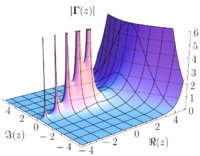
Photo from wikipedia
BACKGROUND Patients with biliary atresia (BA) with extrahepatic cystic degeneration (BACD) have a unique pathophysiology; however, clinical outcomes and progression of perinatal degeneration are not well-defined. We aimed to investigate… Click to show full abstract
BACKGROUND Patients with biliary atresia (BA) with extrahepatic cystic degeneration (BACD) have a unique pathophysiology; however, clinical outcomes and progression of perinatal degeneration are not well-defined. We aimed to investigate the differences in clinical characteristics and outcomes between BACD and isolated BA (IBA). METHODS We performed a retrospective analysis of patients with BA who underwent Kasai portoenterostomy (KPE) from August 1997 to January 2018 and compared the clinical features and outcomes between BACD (n = 21) and IBA (n = 237). Matched-pair analysis for age and sex was performed between BACD and IBA groups to reduce confounding. RESULTS Before matched-pair analysis, we found that BACD patients were younger at KPE (45 vs. 64 days, p = 0.008), showed lower total bilirubin at the 3-month follow-up (0.5 vs. 1.4 mg/dL, p = 0.002), and higher 5-year native liver survival rate (95.2% vs. 61.4%, p = 0.006) than IBA patients. After matching, the BACD group showed significantly lower total bilirubin levels at the 3-month follow-up (0.5 vs. 1.5 mg/dL, p = 0.036) and higher 5-year native liver survival rate (95.2% vs. 57.5%, p = 0.006) than the IBA group. CONCLUSION BACD demonstrated higher bilirubin clearance and native liver survival rates than IBA. LEVELS OF EVIDENCE Treatment Study, Level III.
Journal Title: Journal of pediatric surgery
Year Published: 2020
Link to full text (if available)
Share on Social Media: Sign Up to like & get
recommendations!